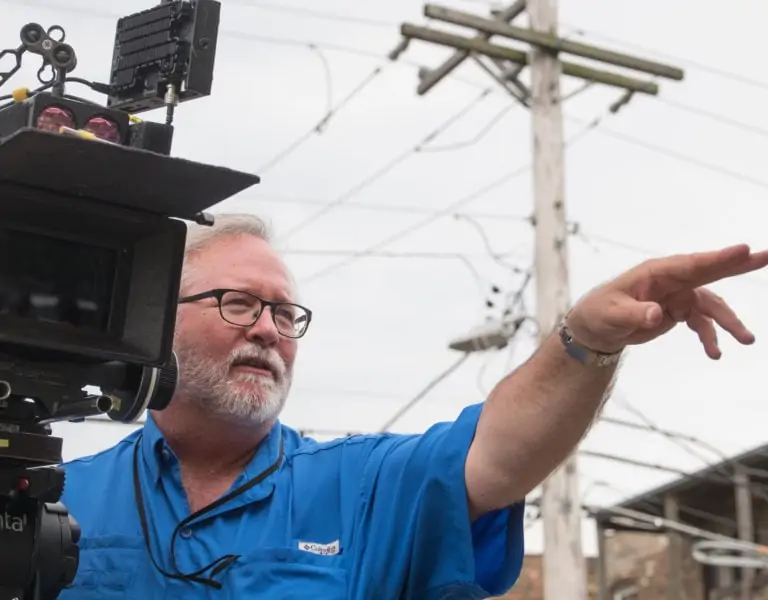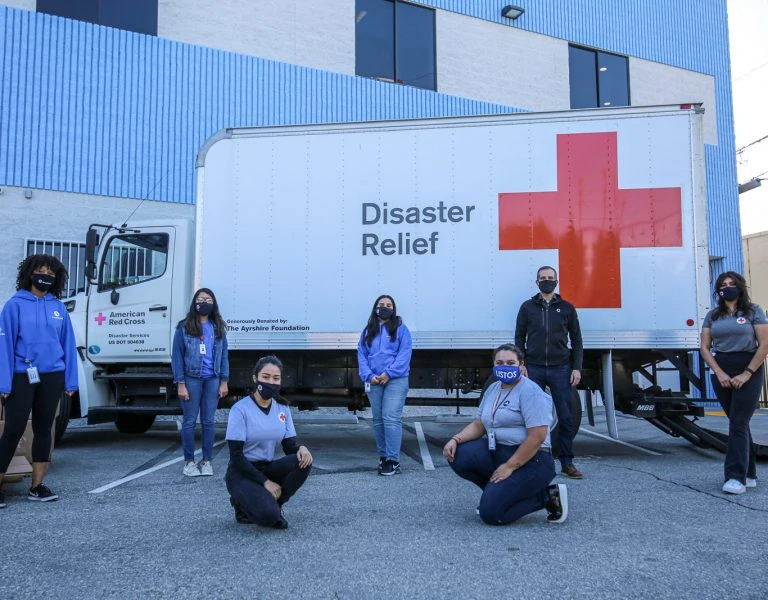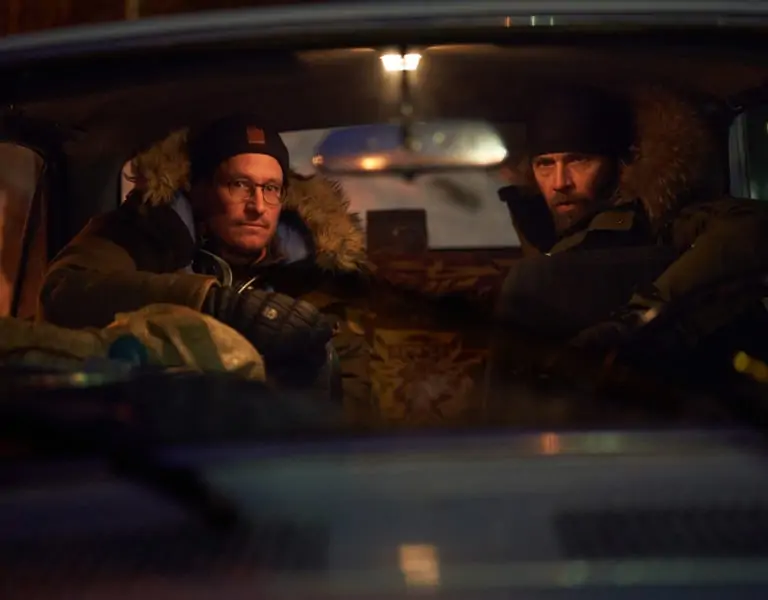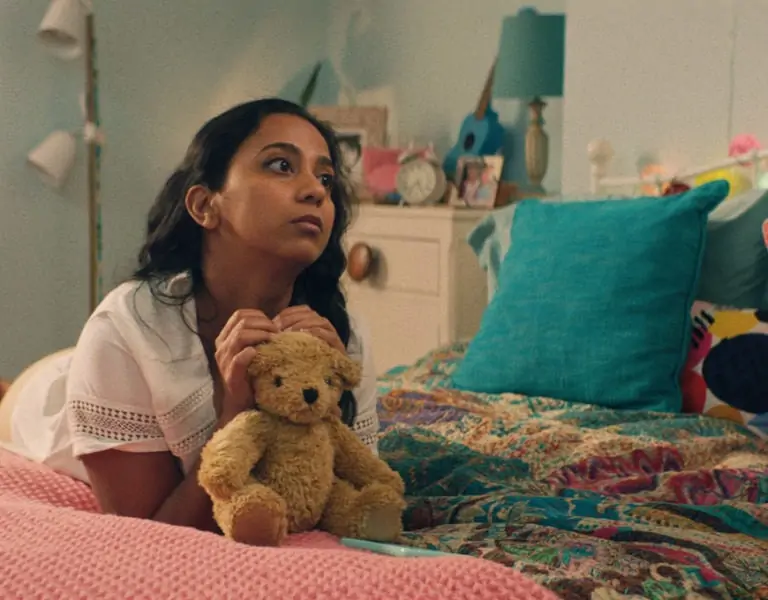SAFE SPACE
The launch of the Mark Milsome Foundation’s Film and TV Online Safety Passport Course has reignited vigorous debate around on-set health and safety.
“At the inquest into Mark’s death, the coroner concluded that on that set, the risk of Mr. Milsome being harmed or fatally injured was not effectively recognised, assessed, communicated, or managed. The purpose of this course is quite simply to ensure that no crew member or performer is ever killed or injured again because (of those neglected risks).”
The speaker is actor Rory Kinnear, known to audiences as a member of James Bond’s MI6, Frankenstein’s unnamed Creature in the series Penny Dreadful, and many other roles. But in off-screen life, he’s also someone who knows the sudden loss of a loved one firsthand. Lost on a film set, no less, a place that in no way is supposed to be as dangerous as, well, being out in the field as a Double-O agent. But those in-story risks are fictive. The losses for those left behind after a set fatality are overwhelmingly real.
Kinnear’s comments come as part of the introduction to a Film and TV Online Safety Passport Course, offered by the Mark Milsome Foundation, named for the late camera operator. As Kinnear recounts, “I was asked to become the foundation’s patron partly because I lost my own dad, the actor, Roy Kinnear, as a result of an accident on a film set in 1988. There were many promises to change health and safety following the accident, but sadly over the years, little was done.”
Indeed, casualties for all sorts of reasons continued to mount in the years between Kinnear’s death, and Milsome’s, and beyond – taking in the still relatively recent shooting of cinematographer Halyna Hutchins (honorary ASC member) on the set of Rust, when actor/producer Alec Baldwin pointed and fired a presumed “prop” gun in her direction.
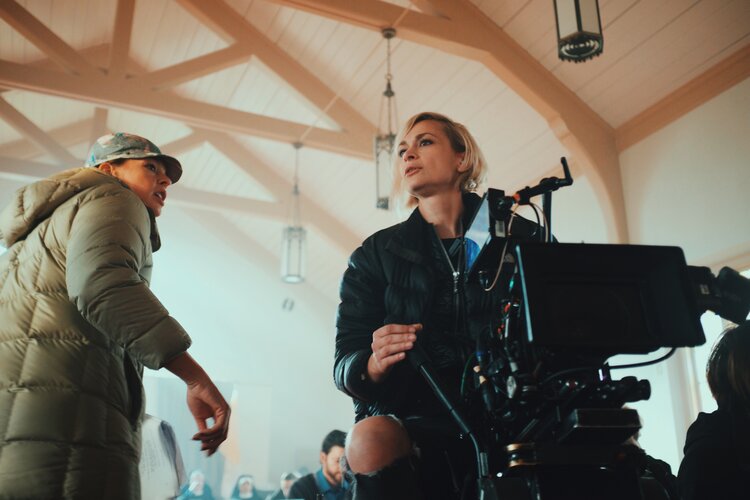
SPARKING CHANGE
Another death prior to Milsome’s, that also led to a movement, at least for a time, was that of assistant cameraman Brent Hershman, in 1997, who had a fatal car accident after almost 20 straight hours on set, when he fell asleep behind the wheel of his car.
This so disturbed his colleague, legendary cinematographer Haskell Wexler ASC, that he made a documentary about the effects of sleep deprivation, called Who Needs Sleep? In those pre-streaming early noughties, the documentary, about the brutally excessive hours that were de rigueur on film sets – certainly US ones – mostly made its way around town on numerous DVDs, and for a while, momentum seemed to be building toward change. But the long hours, exhaustion, and too-short turnarounds persisted, all the way up to the last IATSE contract negotiations.
But even if unions are at least paying lip service to the idea of not having their members constantly exhausted while filming, there is still all the work that the IA doesn’t cover, including a lot of crew on commercial work, and also independent films, where most DPs start out long before membership in the ASC, BSC, or IA 600.
Cinematographer Ludovica Isidori, who shot the recently released Sanctuary, says that “coming from the indie scene, safety is something that too quickly gets left behind. You rarely have the privilege of enough time, and when everyone starts rushing, the safety of people and equipment gets forgotten…There is never enough care when the money is not sufficient. And let’s be honest, the money is always tight, and it is always the problem: producers cutting corners, movies being shot in 18 days when they need 24.”
On the subjects of cut corners and shortsighted producers, Wexler used to hold forth in a converted guest house office of a 1940s ranch style home he’d use as an LA base, opining to this writer – back when both writer and world were a bit younger – that he thought guilds and unions, never mind producers and studios, were just waiting for him to pass on and stop making so much trouble about the issue. No one, he thought, really wanted things to change.
Wexler has been gone some years now, and his rather distinct valley home torn down, replaced with a couple of Bauhaus-style boxes. A visual metaphor, perhaps, for lulling people into a kind of soporific state, whether through repetitive architecture, or endless years-long waits for meaningful workplace reform.
But then the next tragedy comes, to snap people back out of their stupors, at least for a while. The deaths of Milsome, and Hutchins, were two of those.
And while the specifics in each differ, Milsome’s death, in particular, echoes another comment of Isidori’s: “While you’re shooting you have this soft adrenaline rush that keeps you going, and doesn’t make you think straight. Worse is when you do car shots, without having the resources to do them,” mentioning back-of-pickup shots with cameras on high hats, or having “a high hat between the driver and the passenger seat, and you kneel, with no belt on. You do it because you don’t have the money or the time to rig a car, because that’s an ‘easy and fast way’ to get a shot. And all you want to do is get the shot and make your movie.“
Or sometimes the producers want you to get that shot while they make their movie.
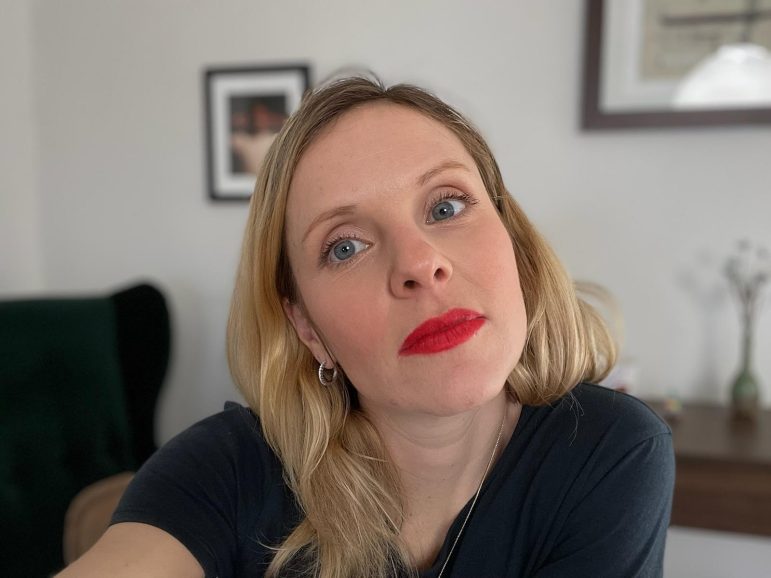
REMEMBERING MARK
Such seemed to be the case with Milsome. As the BBC described it, he “died after being hit by a Land Rover in Ghana in November 2017. He had been working on the Netflix and BBC drama Black Earth Rising.” Quoting the coroner from the inquest, the article said the “Land Rover Defender was supposed to mount a ramp and then topple over. The car mounted the ramp but took off and ploughed into Mr Milsome.”
Compounding the tragedy is that Milsome never should have been in harm’s way. There was a risk assessment done for this production, including that particular stunt, but as Milsome’s widow, Andra, told us, over a Zoom chat shared with Foundation Chair Samantha Wainstein, “nobody reads it.” And it’s not as if there wasn’t time: The assessment was done in July of that year, with the fatal stunt occurring in November. Even more damning, Andra notes, is that if anyone had read it, they would see that it recommended the stunt “shouldn’t be done with any manned cameras.”
It was a kind of fatal flippancy that was also reflected at a later coroner’s inquest (“because we couldn’t have a criminal hearing”) where Andra was able to confront members of the production staff, and where, she says “everyone’s story did not tally.”
The coroner (and barristers) even let her do some of the questioning. When she confronted “the cinematographer, technically Mark’s boss, I asked (about the safety assessment), but it led to him saying to me, ’(Mark was) a grown man, why should I take responsibility? He can make his own decisions.’”
Andra’s reply was that “if any of your esteemed colleagues, Oscar-winning or not, were sitting here, they’d take responsibility for their camera crew as if they were their sons – a band of brothers. I said to him in no uncertain terms he should be ashamed of what he said to me.”
So what is this band of brothers – and sisters – to do?
Andra added that “we can’t sue anyone, we can’t bring criminal charges – and there are no unions,” unlike their American counterparts. Referring to the lawsuits in the wake of the deaths of Sarah Jones, and more recently, and infamously, Hutchins, she said “there’s none of that.”
With Jones, the camera assistant killed along live train tracks during the filming of the Gregg Allman-biopic Midnight Rider, her family finally reached a settlement with both the (since disbanded) production company, and CSX Transportation, some five years after the accident.
As for Hutchins, her widower, Matthew, also recently announced a settlement, “subject to court approval, for our wrongful death case against the producers of Rust including Alec Baldwin.”
The twist, however, is that as a result, Rust will resume shooting in early 2023, with Matthew Hutchins as one of the executive producers. It’s hard to imagine anyone without the most morbid of curiosities wanting to see it. But with Hutchins now sharing in the profits, which could presumably help build a nest egg for their nine-year-old son Andros, the film could serve as a kind of peculiar, cinematic GoFundMe for the grief-stricken family.
As for other reforms that weren’t, in California, a state senate bill by San Jose-area Sen. Dave Cortese, introduced in response to Hutchins’ death, would have required movie producers to hire qualified set safety supervisors, and prohibited ammunition on film, TV, or commercial sets, except in prescribed circumstances. After protests from armorers and others in different IA locals, the bill died in committee in the Golden State’s last legislative session.
Not all tragedies affect all union locals equally.
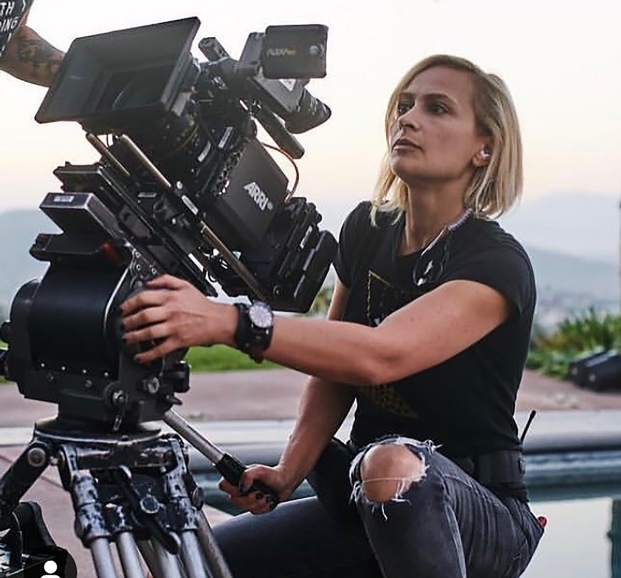
SAFETY IS SUPREME
Even bereft of concrete legislative solutions, or perhaps precisely because there haven’t been any, Wainstein says the foundation has five specific things they’re asking producers to do:
“The first is a safety briefing, which should take place before any dangerous stunt is shot. Incredibly,” she adds, “there was no safety briefing on the day” Milsome was sent where no camera operator should have been.
The second reform was that all such briefings should not only be recorded, but that all cast members feel free to speak up (“and not be blacklisted,” Andra adds), while the third was that there be a clearly demarcated danger zone on sets when needed, for stunts or any other unusual consideration,
One place where landbound camera crews might find some role modelling for such procedures is with their aquatic counterparts. Mike Prickett, whose IMDB biography describes him as an “extreme” director of photography, is known for his underwater filming in titles like X2: X-Men United, and his Emmy-winning work on HBO’s 100 Foot Wave. He acknowledges that “back in the day you didn’t have water safety – you didn’t have to have (authorities) involved. Now you need a water safety permit.”
He found this to be true wherever he’s shot – “the Hawaiian water patrol, Tahitian water patrol, Nazaré water patrol – and then it has to clear to get permitted.” And whether out on Jet Skis, scuba diving, etc., “every cameraman needs their own water safety” – a backup keeping watch, and ready to rescue, if need be. It’s a one-to-one ratio. “You can’t just have one safety for five camera operators.”
After all, he adds, “if we put someone in the water, we’re responsible for them.”
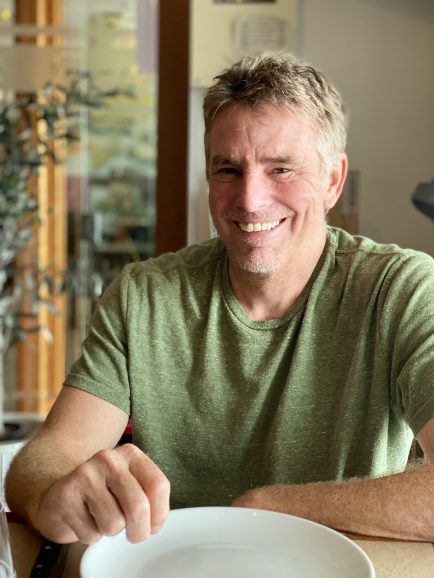
An attitude Wainstein says they often found lacking back on shore, given that the foundation’s fourth asked-for change is that the CVs for any crew member who “might be responsible for crew safety”, (such as stunt or special effects coordinators, armorers, etc.), be diligently checked. Shockingly – or perhaps, more soberingly, not – the CV of Black Earth Rising’s stunt coordinator “was not checked, and not correct”.
The fifth relates to an observation of hers that while, in the UK, “there are a number of laws that (say) every employer has to give their workforce health and safety training,” but this isn’t happening routinely on film sets.
Longtime 1st AC Gabriel Hyman, who is also a board member of the Guild of British Camera Technicians, says that while he’s seeing positive trends in diversity and resources on sets, this “in turn has led to a large growth in crew numbers, and an influx of less experienced people who will inevitably be less aware or risk assessment and the potential dangers… and we need to ensure that this is taken into account when we train them.”
If they ever get trained at all. As Wainstein says, “it’s such a freelance industry, you’ve got tens and tens of thousands of freelancers who come together for a particular production, so they’re not necessarily considered to be employees,” and hence, not required to have the training that those in “civilian” industries would.
But there may be some light breaking through this particular grey area. Wainstein says that they’re “meeting with a number of large film companies – hoping in the new year we’ll be able to announce some of those actions. We’ve also had support from Sony in the UK, who are encouraging their employees to take (our) course.”
And there’s also widespread support for the reforms throughout the industry, both above and below the line.
“We are,” she says, “trying to affect major change.” And while for some families it will come too late, for many, many more, it can’t come soon enough.
